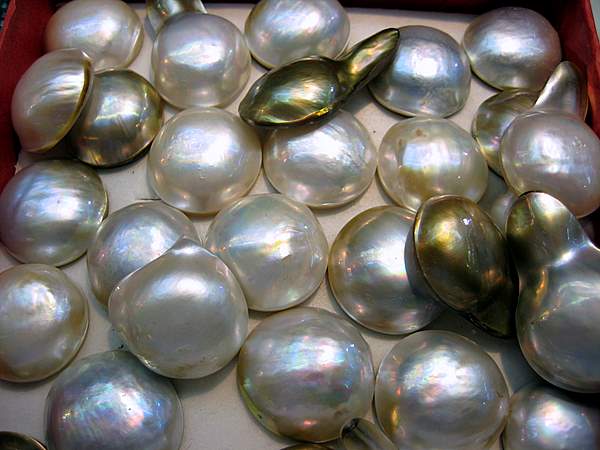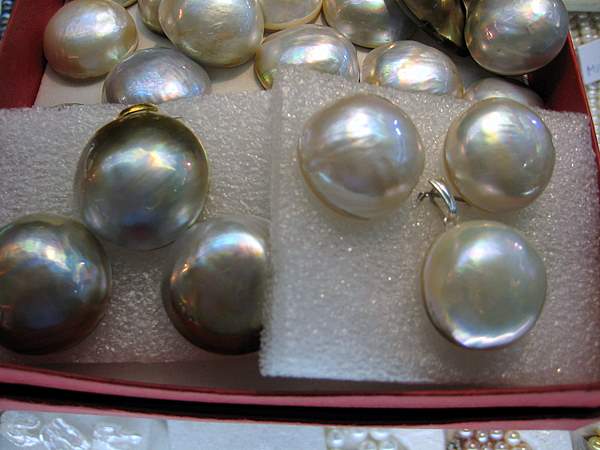|
Mabe PearlsMabe pearls, pronounced, "MAH-bay"....big and beautiful!  Mabe South Sea Pearls Photo by Kari These large, super-sized pearls are breath-takingly lovely. The fact that they are mabes is what makes the big size and the South Sea mollusk nacre makes them beautiful. Notice the colorful orient on the lower left hand mabe pearl. What exactly are mabes? Glad you asked. I love explaining things about pearls....the gueen of gems. Mabes are basically cultured blister pearls that have grown attached to the shell of the mollusk. The mollusks most commonly used to culture mabes are the Pinctada Maxima, Pteria penguin, or Pteria sterna. For growing mabes a flat bottomed, plastic nucleus is glued inside the shell beneath the mantle tissue. This differs from spherical pearls in that most nuclei used for them are made from shells, although experiments with different nuclei have been and are being conducted. Several different shapes can be used for the plastic nuclei. You may see rounds, as in these photos, drops, ovals, or hearts. I've even seen company logos coated with nacre and centuries ago the Chinese would glue on metal Buddhas which were then coated with nacre. The possibilities are almost endless. After the plastic bead has been glued and the mollusk returned to the water, the mollusk then begins coating the nuclei with lustrous nacre, layer after layer of brilliant shine. After between eight and twelve months the mollusk is harvested. This amount of time has allowed about 1mm of nacre to coat the nuclei. The blister pearl is cut off the shell, sometimes with a hollow drill, the plastic nuclei is removed and the hollow space filled with colored resin and sometimes a bead for added strength. The back is then covered with a mother of pearl backing.  Mabe Pearl Sets Photo by Kari Various treatments can be done on mabes, such as coating either the inside of the nacre dome or the top side of the filler. Some mabes receive a reflective colorless or colored coating which enhances the luster and color. Dyeing is also common. For example, a silver bromide solution will give them a dark brown to black appearance. You've no doubt seen some very large pearl flat bottomed earrings. Most of these in the past have been artificial, but with more and more pearls being cultured and the mabe process being perfected, we'll be seeing more that are made of real nacre. |






